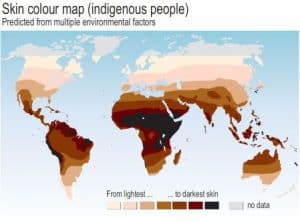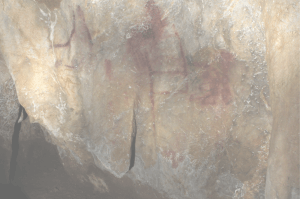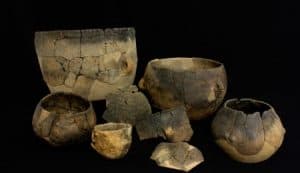While we gaze at the higher peaks of a mountain range rising above the horizon, a feeling of been contemplating distant territories come to our minds, marginal areas away from the daily life of people. This impression is even reinforced if we think in the importance of European mountainous areas in the past. Indeed, we still consider the mountains as the last “natural landscapes” of Europe, where the transforming action carried out by humans would have arrived later and more superficial compared to the coastal regions or gentler orography areas.
However, recent research shows that grasslands located in the shadow of the highest peaks of Europe are actually the result of the interaction between humans and the environment. These new interpretations are being produced by a research strategy – Landscape Archaeology – which investigates the relationships between human groups and their environment.
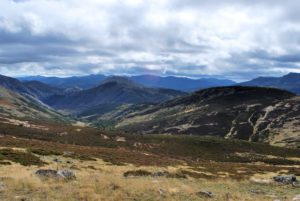
Figure 1. Upland grasslands nearby La Cueta (Cabrillanes, León, Spain).
This research program has already been stablished in mountain ranges like the Alps or the Pyrenees. However, this type of studies is not well developed in other European upland areas, such as the Galician Massif or the Cantabrian Mountains in North-western Iberia. Sometimes, these regions have been described as a “natural paradise”, as the Asturian tourism agency successfully coined 30 years ago. But are Asturian green meadows truly paradisiacal or almost virgin spaces? What has been the relevance of the anthropogenic impact in the shaping of these landscapes throughout history? These are the questions that are being addressed in our archaeological research project aiming to unravel the biography of upland landscapes in the Cantabrian Mountains.
For this purpose, we carried out archaeological fieldwork few weeks ago in a pilot project launched in the mountains of Babia (León). This project was coordinated by the Institute of Heritage Sciences (Incipit) at the CSIC, The Prehistoric Society and the Department of Archaeology at Durham University. During three weeks, we conducted archaeological prospections and excavations in ancient seasonal settlements above 1700 meters above the sea level. These settlements, known in this area as “majadas” or “brañas”, hosted the shepherds and their flocks during the summer season.
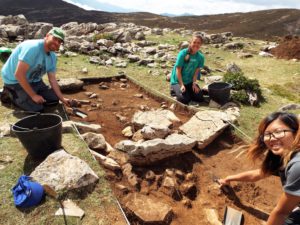
Figure 2. Archaeological excavation of a sheperd’s hut in the uplands of Babia.
Our feelings at the end of the first fieldwork season could not be more positive, since we have gathered a substantial amount of archaeological information. Firstly, we recognized a wide selection of ruined pastoralist structures, including shelters and shepherds’ huts, as well as different types of pens and enclosures for the flocks and the herds. We also collected several hundreds of archaeological objects, mainly fragments of pottery.
The preliminary study of the sites and the archaeological materials reveals the outstanding impact of transhumant pastoralism during the last two or three centuries. At the time, pastoralism was a central activity for the local inhabitants of Babia, complementing the agriculture developed at the bottom of the valleys. During the summer, local herds fed on the upland pastures, and also large flocks of sheep arrived to Babia following the transhumance routes stablished by La Mesta system from Extremadura. Moreover, the excavation of few ancient huts showed that some of them were occupied during the Middle Ages, as the appearance of certain types of pottery suggests.
In the surroundings of the summer farms studied, we also recover a few fragments of pottery which could be much older, prehistoric perhaps considering their characteristics. For that reason, while we finish studying them in the laboratory, we think that these remains would be the oldest testimonies of the shepherds’ presence in these mountains. These pieces of pottery would come from huts and shelters hidden from our eyes by the passage of time. The discovery of those structures requires applying methods such as Geophysics for detecting the existence of sites completely covered by sediments.
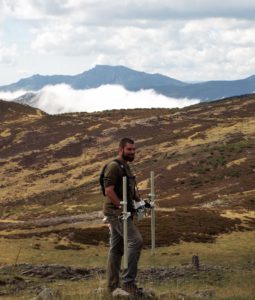
Figure 3. Geophysical prospection using a magnetometer helps to recognize buried structures invisible from the surface.
During fieldwork we noticed that shepherds selected similar locations throughout different historical periods to establish their seasonal settlements. These sites are sheltered from dominant winds, close to water streams, with wide visibility on the best pasture areas of their surroundings, while avoiding avalanches and landslides areas. Therefore, those locations would have been attractive for shepherds at different historical phases. So, an archaeological palimpsest came out in the uplands as a result of the accumulation and mixture of material remains produced by human groups at the different stages of the landscape biography of the mountains.
Our archaeological investigations in the Cantabrian Mountains revealed the constant presence of human groups in these uplands along the last six millennia. In fact, these observations agree with the results of pollen analysis recovered in several lakes and peat bogs in the area. Pastoralism is pointed out in such studies as the main activity carried out by local communities for the anthropogenic making of mountainous landscapes over thousands of years.
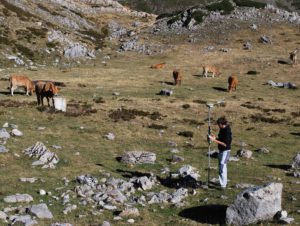
Figure 4. Pastoralism has left their footprint on these mountains throughout the last millennia. Topographic works for the documentation of ancient herding structures in areas currently in use by livestock.
In conclusion, the Cantabrian Mountains did not constitute a marginal area for local communities in the past, but on the contrary, these landscapes reveal a strong anthropogenic impact by pastoral activities, at least from the Late Prehistory. The passage of time, and continuous collective efforts invested in this land by peasant families, favoured the extension of the pastures and the retreat of the forest, in connection with the cultural, social or political processes of each historical period. As a result, mountainous areas such as Babia have progressively adopted the precise tones and shapes that we can admire today if we turn our gaze to these elevated areas, which instead of being mere “natural landscapes”, they are indeed “cultural landscapes”.
By Dr David González-Alvarez, Postdoctoral Visiting Fellow, Department of Archaeology, Durham University; Postdoctoral Researcher, Instituto de Ciencias del Patrimonio (Incipit-CSIC). SRUK Northwest constituency.
More info:
Project Facebook page and Twitter profile
Author’s profile at Academia.edu and at Google Scholar

